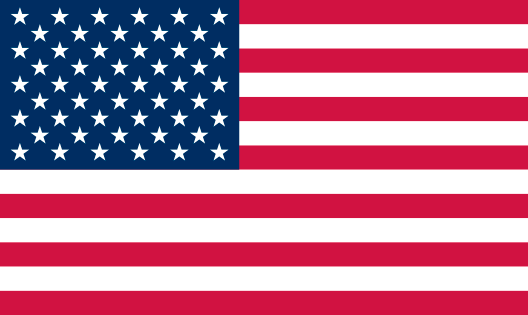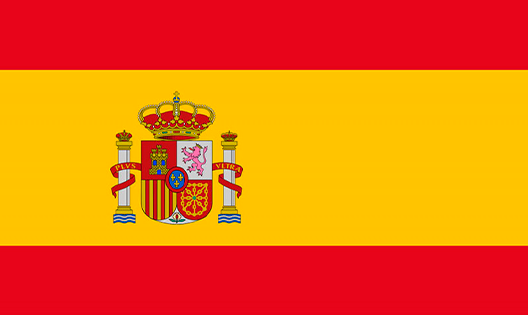Inauguration Mass of the new headquarters of the Guadalupe Association presided over by Father Djalma, diocesan advisor and by Dom Tiago - Auxiliary Bishop of the Archdiocese of RJ
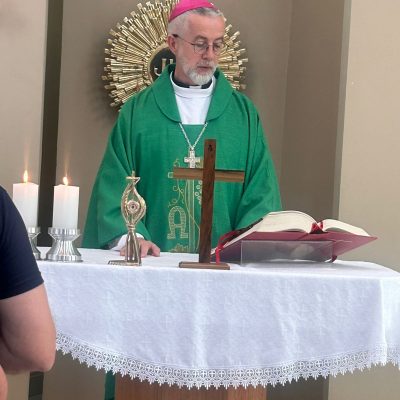

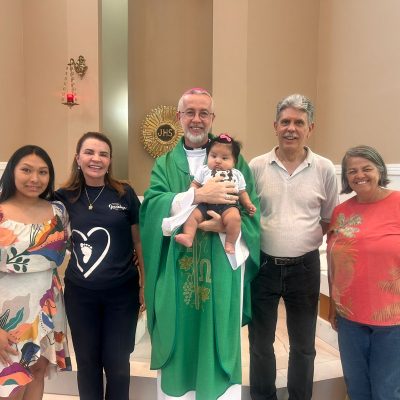

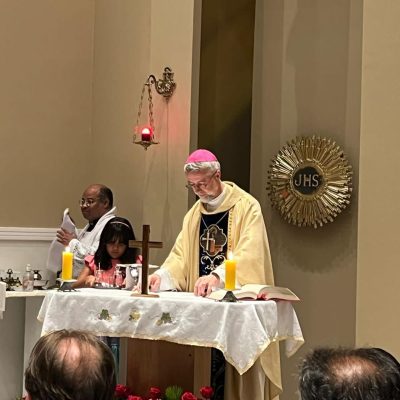

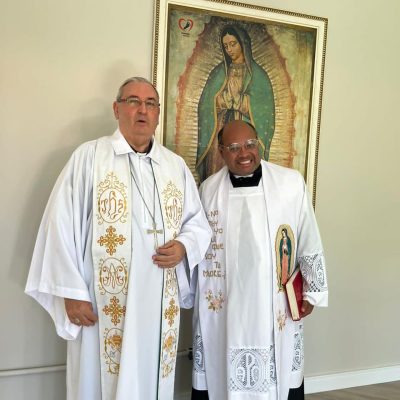

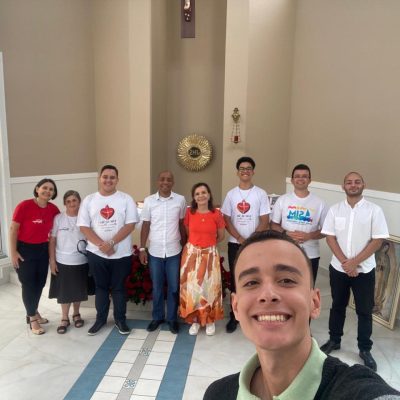
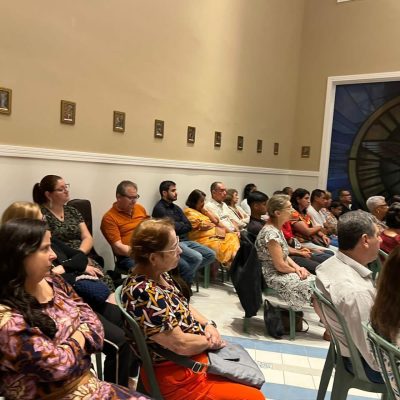
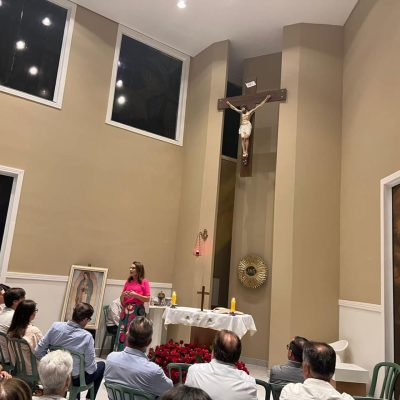
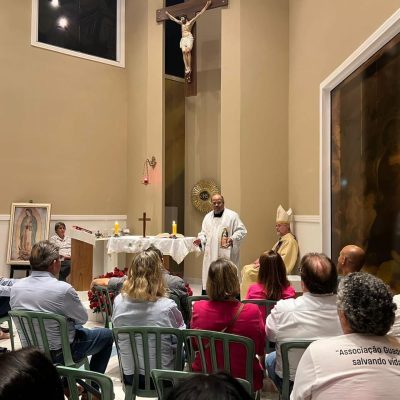
Schedule: Monday through Friday:
12:00 PM – Angelus
3:00 PM – Divine Mercy Chaplet
Tuesday to Friday:
9:00 AM – Cenacle MSM
10:00 AM – Mass and Confession
1st Saturday of the month:
8:00 AM – Mass in Reparation to the Immaculate Heart of Mary
10:00 AM – A Thousand Hail Marys
Fridays:
10:00 AM – Marian Rosary with the Imposition of the Mantle of Our Lady of Guadalupe
Cloak of Our Lady of Guadalupe

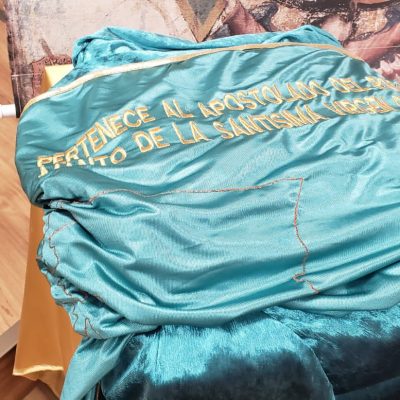
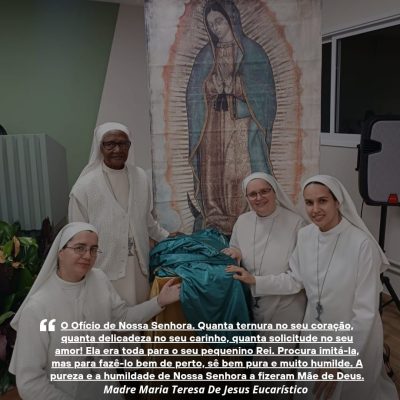

Our Lady of Guadalupe - Patroness of all America
The Virgin of Guadalupe is a figure deeply connected to maternal care and the appreciation of life, which directly reflects the Association’s purpose of supporting women in difficult situations and protecting the lives of unborn children. Furthermore, Our Lady of Guadalupe is known for her message of love and hope, especially to the most vulnerable. Our Lady of Guadalupe’s connection with the Guadalupe Association acts as a place of refuge and support for women in crisis, helping them find strength and hope amid the countless sufferings they face. Our Lady of Guadalupe looks upon the most defenseless: the babies still in their mothers’ wombs; look upon their mothers and cover each of them with her mantle of love.

Juan Diego
Juan Diego was an Aztec Indian from the region of present-day Mexico City. His Aztec name was Cuauhtlatoatzin, meaning “speaking eagle.” Juan Diego is his Christian name. He was born in 1474 in the Tlayacac hill neighborhood, north of Mexico City. Juan Diego belonged to the lowest caste in the Aztec empire. However, he was not a slave. He was a peasant who also worked as a mat maker. He was married and lived happily with his wife, but they had no children.

Encounter with the Christian faith
Juan Diego was an Aztec Indian from the region of present-day Mexico City. His Aztec name was Cuauhtlatoatzin, meaning “speaking eagle.” Juan Diego is his Christian name. He was born in 1474 in the Tlayacac hill neighborhood, north of Mexico City. Juan Diego belonged to the lowest caste in the Aztec empire. However, he was not a slave. He was a peasant who also worked as a mat maker. He was married and lived happily with his wife, but they had no children.

Wife's death
María Lúcia, Juan Diego’s wife, died in 1529 due to illness. He then decided to live with an uncle. This reduced the distance from his new home to the church to fourteen kilometers. From then on, he made this walk every Saturday and Sunday, always leaving before dawn to hear the Word of God. Juan Diego always walked barefoot and, on colder mornings, wore a garment made of thick fabric made from the fibers of a cactus. This garment, similar to a cloak, was called a tilma or, also, ayate. It was a garment worn by the poor, Juan Diego’s social class.

First encounter with Our Lady of Guadalupe
On December 9, 1531, when Juan Diego was walking to church at dawn, around three thirty in the morning, while he was between his village and Mount Tepeyac, the first apparition of the Virgin of Guadalupe took place. In the place known today as “Chapel of Cerrinho”, Our Lady appeared and spoke to Juan Diego in his native language saying: “Juan Dieguito”, “the most humble of my sons”, “my youngest son”.

The Virgin Mary's request
Our Lady tasked Juan Diego with taking a request of hers to the Franciscan bishop, Don Juan de Zumárraga. The request was that a church be built on the very spot where the Virgin had appeared to Juan Diego. The bishop, however, did not believe the word of poor and humble Juan Diego. In another apparition, Our Lady asked Juan Diego to insist. Obediently, the next day, a Sunday, Juan Diego returned and spoke with the bishop. The bishop, in turn, demanded that Juan bring concrete proof of the apparition.

Humility and miracle
Poor Juan Diego returned discouraged and avoided the place where he had seen the Virgin Mary, fearing her rebuke. The following Tuesday, December 12th, he had to go to the city again to seek help for his uncle, who was very ill. And once again, he avoided the same route, fleeing from the Virgin Mary. However, Our Lady appeared to him anyway. Juan Diego then told her of his disappointments with the bishop and said he no longer wanted to do such work. The Mother, however, consoled him, saying: “Dear little son, am I not with you? I, who am your mother?” Hearing these words, Juan Diego felt his heart strengthen again.

A request from Mary and miracles begin to happen
Our Lady then asked Juan Diego to go and gather flowers on Mount Tepeyac. It was winter, and no flowers grew at that time. Despite this, Juan Diego obeyed. Thus, at the top of the mountain, in the middle of winter, he found beautiful flowers. Amazed, he gathered them, placed them in his cloak, and went to Our Lady. Our Lady asked Juan Diego to take these flowers to Bishop Zumarraga as proof of the apparition.

The miraculous cloak
Before the bishop, poor Juan Diego opened his cloak. At that moment, the flowers fell, and within the rough fabric of the cloak, the image of Our Lady of Guadalupe appeared. At that very moment, his uncle said he had received a visit from the Virgin Mary and was cured. Saint Juan Diego was fifty-seven years old at the time.

From marginalized to evangelizer
The bishop, amazed and repentant, believed the words of poor Juan Diego and began to take steps to build the chapel requested by Our Lady. After the miracle of Guadalupe, Saint Juan Diego began to live in a room next to the chapel where the sacred image was temporarily placed. He passed his properties and businesses to his uncle and dedicated the rest of his life to spreading the apparitions to his native brothers, who began to convert by the thousands. He demonstrated such a deep love for the Eucharist that the bishop granted him special permission to receive communion of the Body of Christ three times a week. Such permission was extremely rare at the time.

Miraculous image
The miraculous image of Our Lady of Guadalupe has endured for over 450 years without a plausible explanation. The tilma bearing the image has lasted no more than 20 years. This one, however, has endured for centuries. It has withstood fires and even explosions without suffering a single damage. Recent studies confirm that no ink is printed on the tilma, and it is unknown how the image is formed. An ophthalmologist examined Our Lady’s eyes in the image, magnifying them hundreds of times. Upon enlargement, he discovered that the Virgin’s eyes show the exact moment Juan Diego opened her cloak and the image appeared. The scene appears in the Virgin’s eyes as in the eyes of a human being. There are already books upon books and numerous scientific studies on the mysteries of the image of the Virgin of Guadalupe. And the Mother of All Men chose the one who considered himself “the excrement of the people,” as he himself repeated many times, to reveal to the world her love for humanity.

Death
Juan Diego died a natural death on May 30, 1548. He was seventy-four years old. Pope John Paul II celebrated his canonization in 2002. On that occasion, he established his liturgical feast day as December 9. This was the day of the first apparition of Our Lady of Guadalupe. The Pope praised Saint Juan Diego’s simple faith and exalted him as a model of humility for all.


